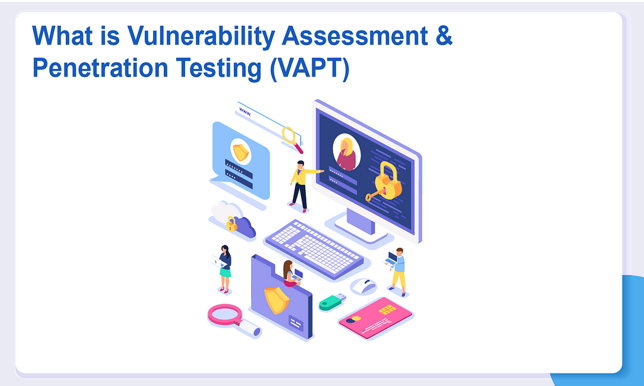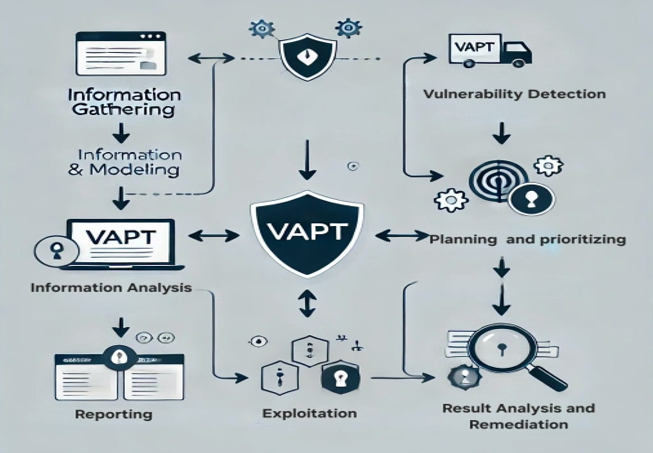Vulnerability Assessment and Penetration Testing (VAPT) is a significant
cybersecurity measure that assists organizations in detecting and
resolving potential security weaknesses within their IT infrastructure.
1. Vulnerability Assessment (VA):
Focuses on identifying and listing vulnerabilities in a system.
It’s more automated and involves scanning tools (like Nessus, OpenVAS).
Example: Finding outdated software versions or misconfigured servers.
2. Penetration Testing (PT):
Simulates a real-world attack to actively exploit vulnerabilities.
It’s more manual and practical, requiring human skill and creativity.
Example: Exploiting SQL injection or bypassing authentication mechanisms.
What do we mean by the term VAPT?

Vulnerability Assessment and Penetration Testing (VAPT) encompasses
various security evaluations conducted to identify and mitigate system
vulnerabilities. These assessments may include automated scans, manual
penetration tests, or red team exercises to uncover security weaknesses.
A vulnerability is a flaw within a system that cyber attackers could
exploit. Vulnerability assessment aims to detect these issues, allowing
organizations to apply fixes and strengthen security.

Importance of VAPT
VAPT plays a crucial role in safeguarding sensitive data by identifying
security gaps and guiding organizations on how to address them. It also helps
build customer trust by ensuring compliance with global standards like GDPR,
ISO 27001, and PCI DSS.